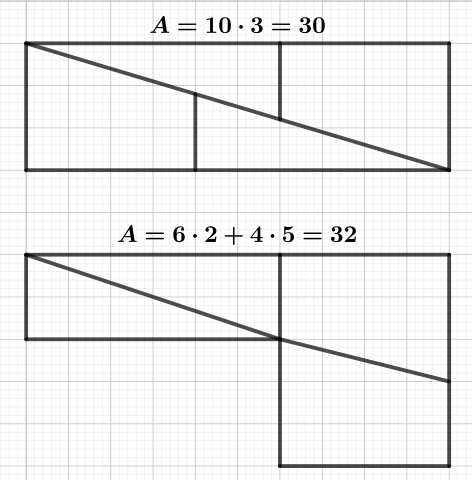
William Hooper published the oddity in 1774. The rectangle at the top measures 10 units by 3, giving an area of 30. But its dissected pieces seem to produce two other rectangles, with areas 12 and 20. Where did the two extra units come from?

William Hooper published the oddity in 1774. The rectangle at the top measures 10 units by 3, giving an area of 30. But its dissected pieces seem to produce two other rectangles, with areas 12 and 20. Where did the two extra units come from?